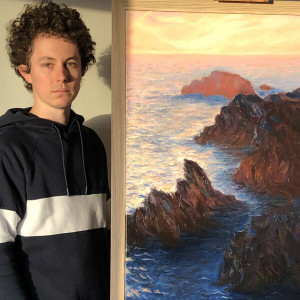After many years of travelling and residential (European) artists painting the Australian landscape in essentially the same style, two Melbourne artists decided to buck tradition and start a new art movement.
This revelation, the first official art movement in Australia, became known as the Heidelberg School because it was mostly practised in the Melbournian suburb of Heidelberg. As such, it had profound impacts on the community and even abroad at the time and has had a lasting effect on art history as well.

How the Heidelberg School Art Movement Began
In the late 19th century, 1891 to be precise, artists Arthur Streeton and Walter Withers exhibited their paintings in Melbourne. Art critic Sidney Dickinson viewed the exhibition and in his critique referred to the works as being part of “the Heidelberg School,” a term he invented since the two artists had painted the works in the suburb of Heidelberg.
This is where we get the term, but how did the actual movement come about?
At the time, Australian nationalism was on the rise as the colonists inhabiting the country could sense that there would soon be a federation of states and a new country would be born. One of the things that Australians had already settled on as a national pastime was Australian landscape art.
Since the very first days of settlers coming ashore to the continent, there had been artists eager to capture the vivid colours and exotic flora and fauna, never-before-seen by European eyes. They focused on capturing good likenesses of what they saw in order to report back to Britain accurate depictions of the land and its many interesting plants and animals. Some artists also painted Indigenous people, however, it was often the case that the artist depicted them through a romanticised lens rather than a strictly realistic one.
No matter how an artist chose to paint the Australian landscape, whether realistically or romantically, their styles were generally similar since they had come from Europe where that type of painting was in fashion.
Streeton and Withers decided to go in a new direction with their painting style, embracing elements of Impressionism and applying them to the particular experience of capturing the likeness of Australia. By the time they (along with a few other artists) began their group, colonial life had given way to town and city living; the Australian landscape had already gone through substantial changes since the first artists arrived.
Streeton and Withers, along with the other founding members of the School and the students who joined in after its conception, explored new painting techniques and styles while also painting different types of scenes in the new phase of development Australia was going through. It was a natural progression in art.
Thus, the tradition of Australian impressionist landscape paintings was born.
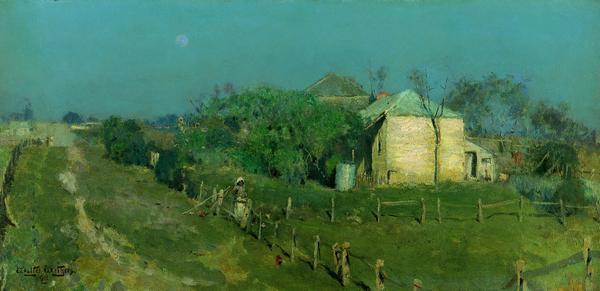
Characteristics of Heidelberg School Art
Before the Heidelberg School, landscape paintings in Australia tended to have a dreamy quality even if they were realistically portrayed. This is because the land was shiny and new, and the artists painting it were simply enamoured by the amazing views and environments that were entirely different from anything found in Europe.
By the time of the Heidelberg School, people were more used to the land; the shiny newness had worn off for many people and the next step was learning how to integrate with the land in a new sense. Many white Australians were feeling a sense of national pride for the (soon-to-be) country they were part of; at this point, there were many born-and-raised white Australians.
Rather than view the landscape, and newly-created city life, through naive European eyes, the new generation of Australians started depicting life in a more realistic sense.
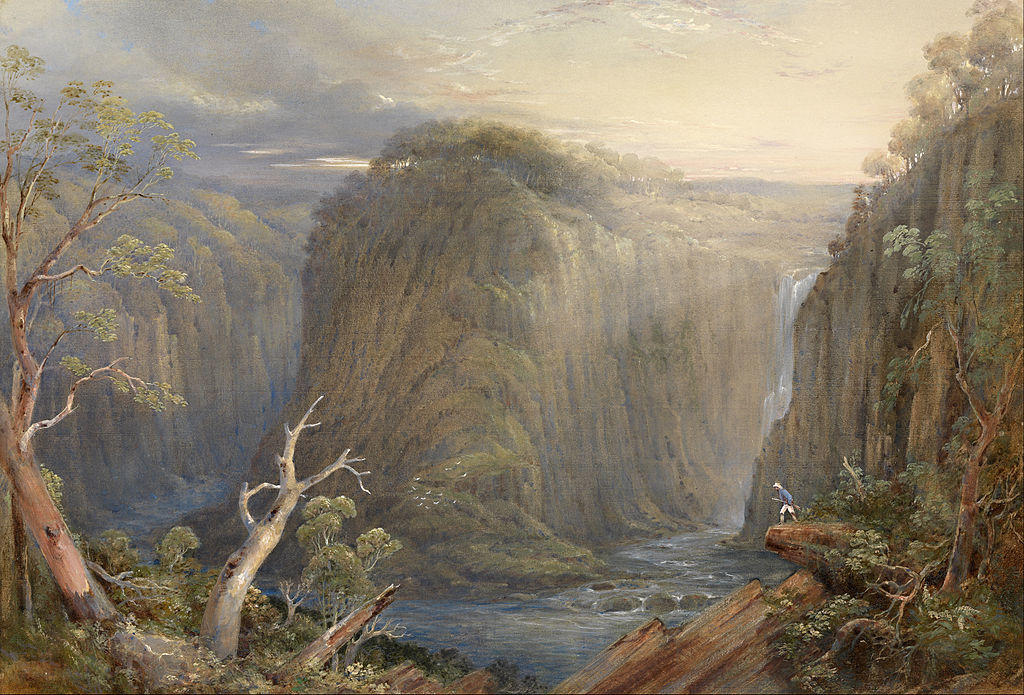
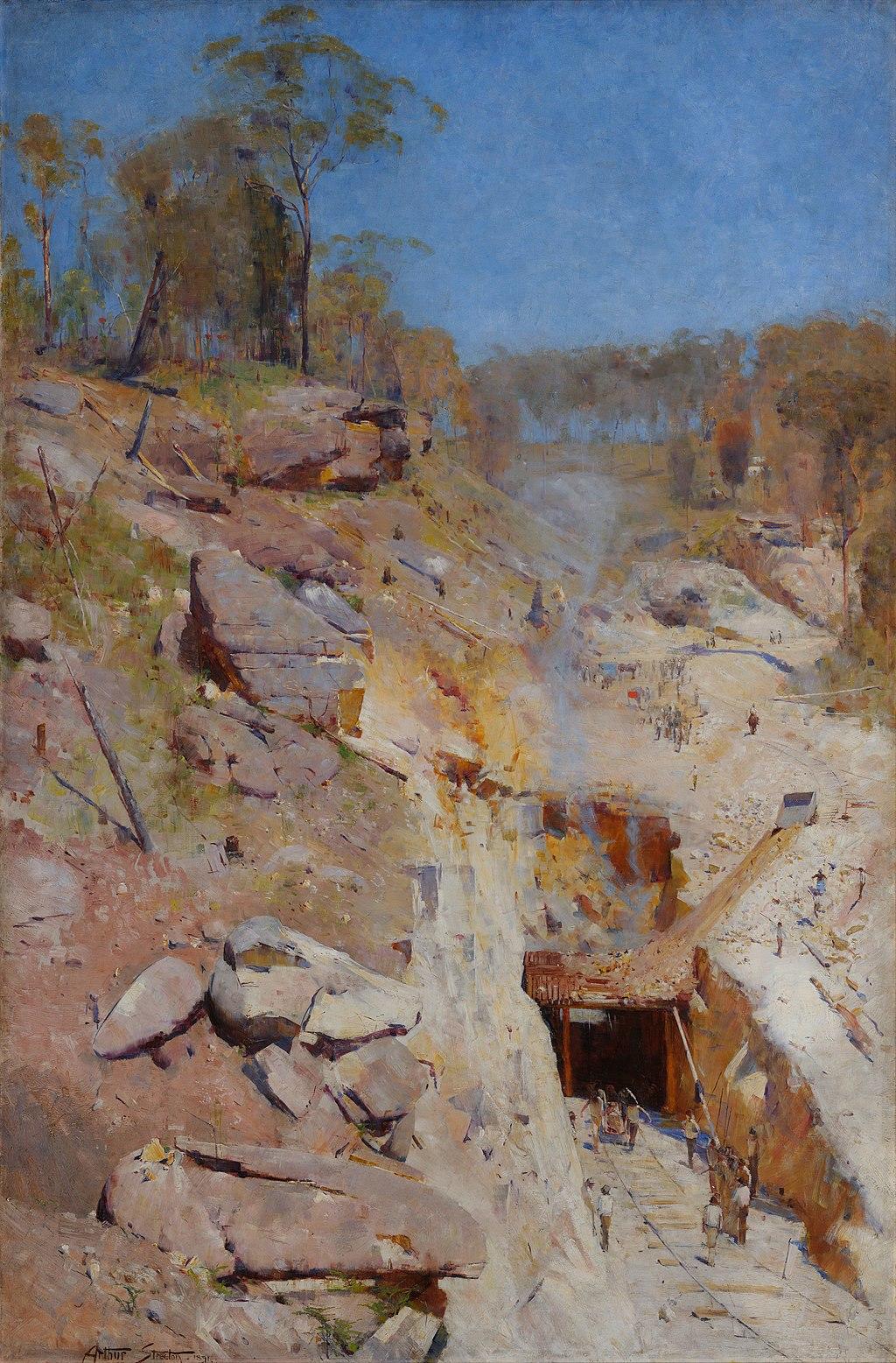
Instead of exclusively portraying bucolic country living, expansive desert and ocean landscapes, and romanticised depictions of Indigenous peoples, the new generation of Australian artists started to paint things they saw in their daily lives, including a different interpretation of nature. They painted en plein air, working to capture the feeling of a scene more than each minute visual detail.
There were only a handful of artists in the movement, including the aforementioned Arthur Streeton and Walter Withers as well as Tom Roberts, Charles Conder, and Frederick McCubbin. Other painters were inspired by the style, but these five men were the original group.
Together, they would meet in ‘artist camps’ in the suburbs near Melbourne and Sydney, where they would enjoy each other's company and work on their painting skills. They would search the natural landscape for inspiration, focusing especially on natural elements like the harsh light of the sun.
The camps consisted of tents with supplies of food where the artists could stay immersed in nature for longer periods of time.
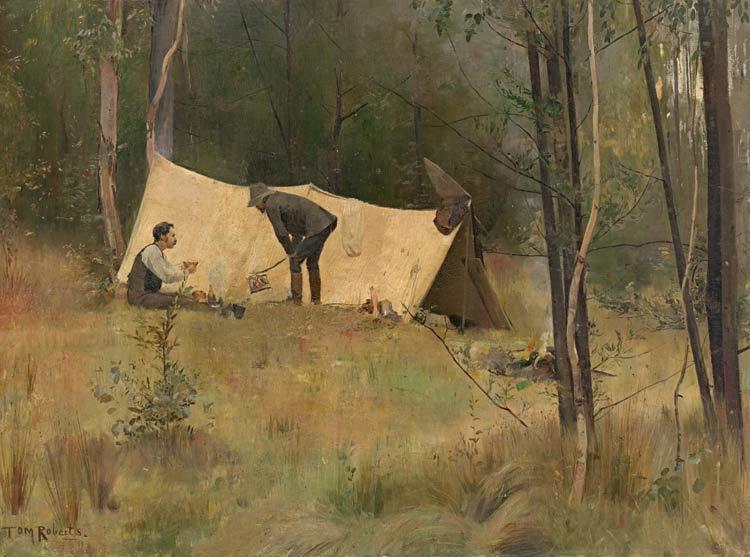
Like many great art movements in history, including the original Impressionist movement in Europe, the work of the Heidelberg artists was met with mixed opinions. The artists were aiming toward creating a complete aesthetic movement, as evidenced by their first big exhibition called ‘9 by 5 Impression Exhibition’ held at Buxton’s Rooms.
In addition to aesthetic paintings that captured Australia’s natural elements in a new way, all the other design elements of the exhibition were also deliberately off-beat.
The canvases consisted of cigar box lids, which were 9 inches by 5 inches, which inspired the name of the show. The frames around the portraits were unconventional: asymmetrical kauri pine planks that were either raw or painted with metallics and decorated with verse or sketches. The room was decorated in a “Japonist” style, and the ambience was completed with fragrant bouquets and live music.
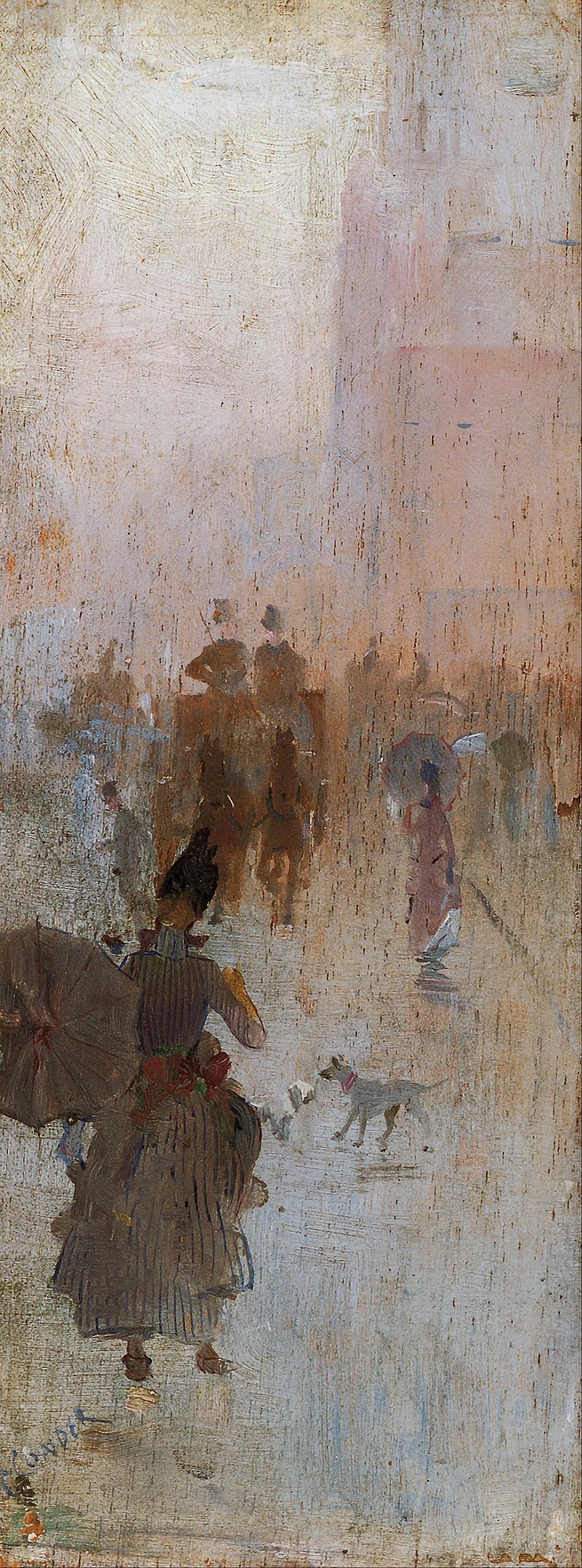
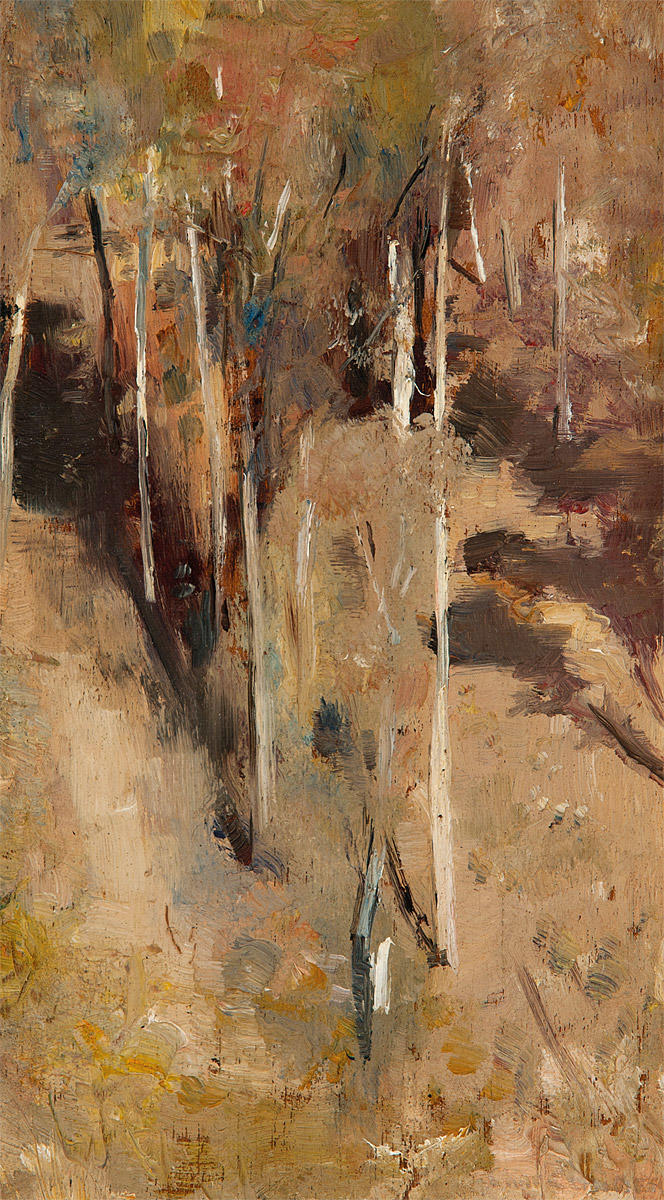

All this culminated in an ‘avant-garde-style’ experience, which piqued the interest of the public while drawing ire from art critics. Just like with the original Impressionist movement, some detested the art style, likely because it was so different from the typical style at the time, which aimed to capture photograph-like moments in time.
The Heidelberg artists released a statement, beautifully summing up the intention of Impressionism:
An effect is only momentary: so an impressionist tries to find his place. Two half-hours are never alike, and he who tries to paint a sunset on two successive evenings, must be more or less painting from memory. So, in these works, it has been the object of the artists to render faithfully, and thus obtain first records of effects widely differing, and often of very fleeting character.
Introduction, The 9 by 5 Impression Exhibition, Melbourne, 1889.
Time has proven that the Heidelberg School characteristics of painting were a good artistic choice. Almost all of the ‘9 by 5’ exhibition’s paintings were sold at the time, and recent auctions have sold those paintings at over $1,000,000. Unfortunately, only about one-third of the paintings still survive.
The movement signified a new point in Australian history, when the formerly British people began to turn from feeling like settlers to feeling like Australians. The movement was a critical point at which new culture was being created as Australians started defining what it meant to be uniquely Australian.
Famous Heidelberg School Artists
Who were the Australian impressionist painters in the Heidelberg School? The small group of five main artists kicked off the movement on their own.
Frederick McCubbin (1855-1917)
McCubbin was involved in the arts for most of his young life, studying at the National Gallery of Victoria Art School and later becoming a teacher at the National Gallery school and later becoming president of two different art associations.
Early in his career, he became known for portraying the Australian bush in all its hardship, often painting scenes of pioneers struggling in nature. This was a stark contrast to the romantic, almost whimsical, landscape paintings that were popular in colonial times and leading up to the late 19th century.
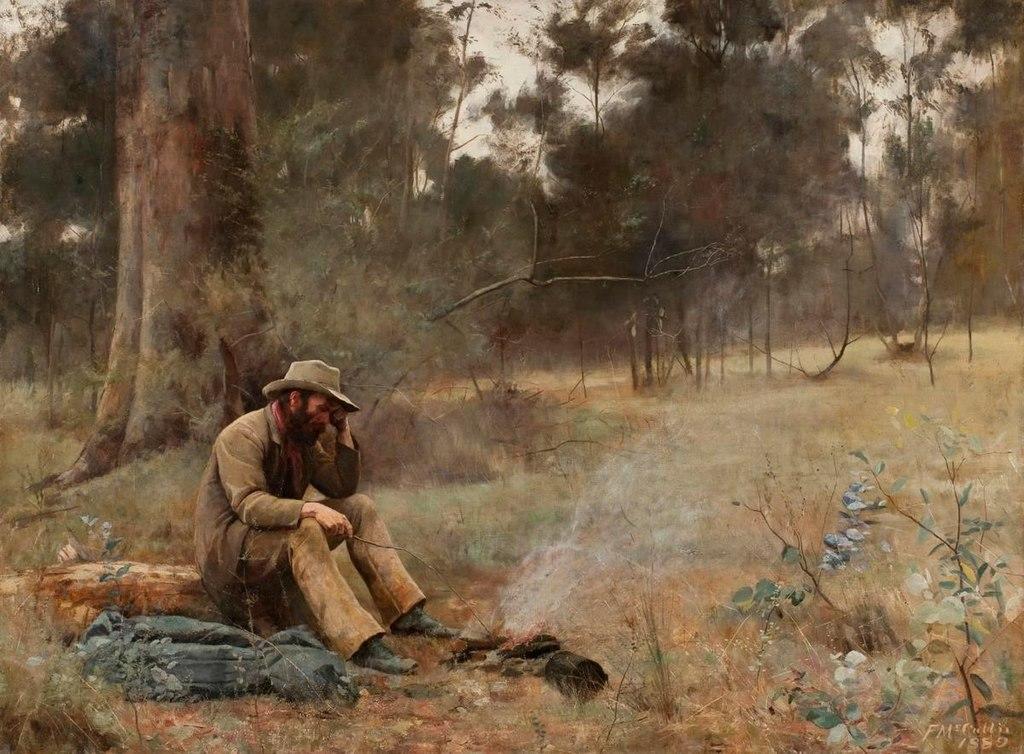
In 1883, he joined the Buonarotti Club, a bohemian artists’ society in Melbourne that would directly lead to the formation of the Heidelberg School. In the Club, members practised painting en plein air and would critique each others’ works. He, along with some other members of the Club, like Tom Roberts, evolved into the Heidelberg School.
Some of his best-known works include The Pioneer (1904) and Down on His Luck (1889).
Tom Roberts (1856-1931)
Roberts enjoyed specialising in painting life in the rural areas of the newly established post-colonial cities. He had received a formal art education in Europe and learned about painting en plein air there as well as about the principles of Impressionism. In Australia, he met Fredrick McCubbin and the two became close friends. Roberts had a big personality and drive, earning hi the nickname “Bulldog”, and that drive helped boost the Heidelberg School’s mission and kept it from fizzling out.
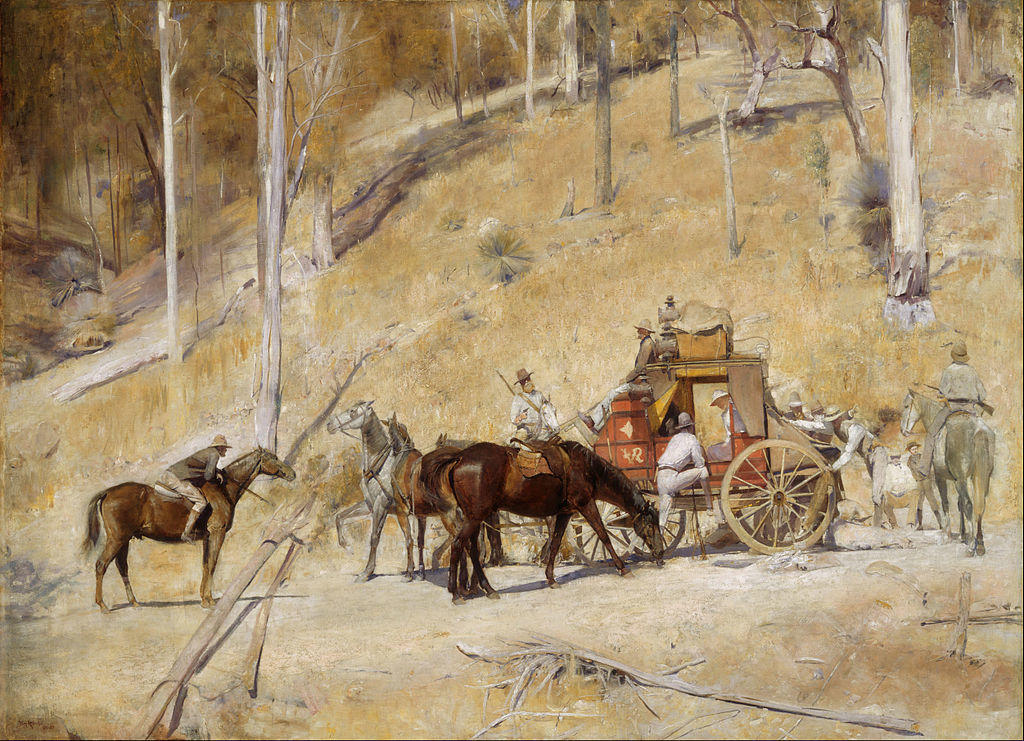
In 1985-86, he established the Box Hill artists' camp, the first artists’ camp of the movement, with Frederick McCubbin. He was an integral member of the Heidelberg School for much of his life, and can be considered the person who pushed the School into popularity and therefore history.
He had a studio space at Grosvenor Chambers that he sometimes shared with some other members of the School.
Some of his most well-known works include Shearing the Rams (1890) and Bailed Up (1895). Beyond landscapes and slice-of-life paintings, he earned a living through portraiture.
Arthur Streeton (1867-1943)
Streeton focused on capturing colour and light in a way that more intricately conveyed the atmosphere of the Australian wilderness than a standard realism painting can manage.
In the summer of 1886-87, he was approached by McCubbin and Roberts, who saw him painting en plein air on the beach and was invited to join their artists’ camps.
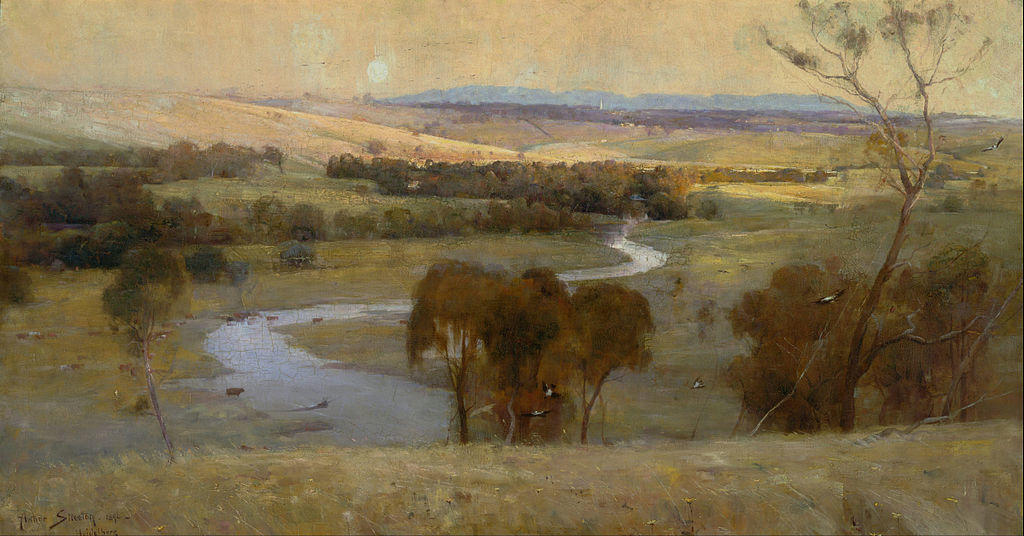
Some of his most famous works include 'Still glides the stream, and shall for ever glide' (1890) and Blue Pacific (1890).
Walter Withers (1854-1914)
Withers studied art a little later in life than others because his father disapproved of his desire to become a painter. As a result, he only started learning formally around 1887, when he moved to Paris shortly after getting married. Before then, though, he had already earned a reputation as a competent black-and-white artist.
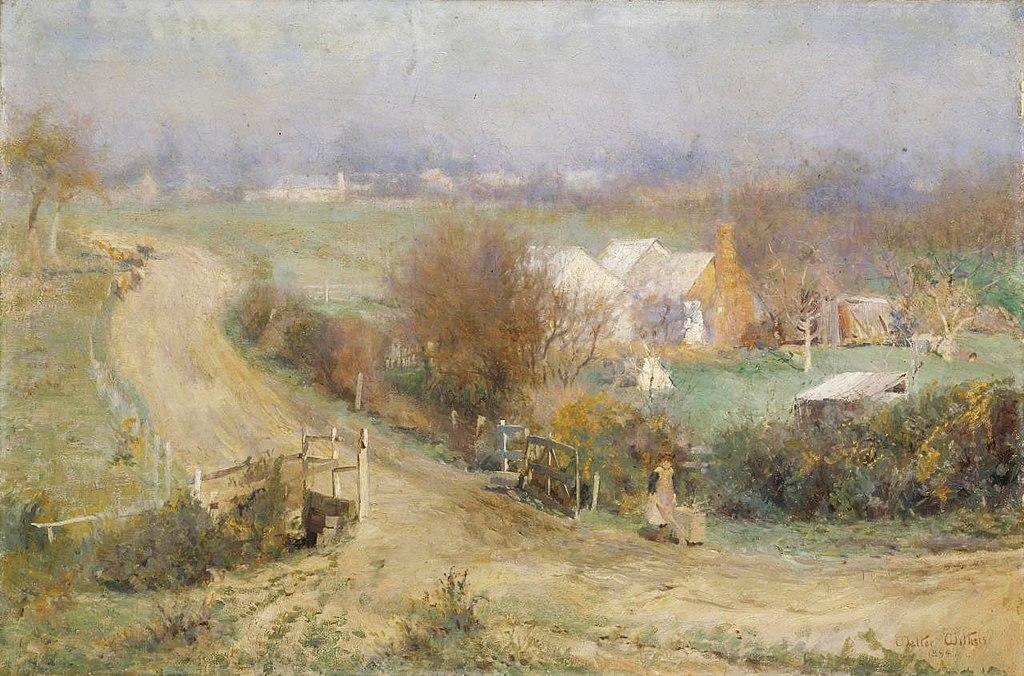
He was brought back to Australia when he was requested to come and do black-and-white work on commission for Messrs Fergusson and Mitchell of Melbourne. Here, he got to know the other men who would come to form the Heidelberg School.
Although Withers wasn’t the focal point of the group, his artistic talents were appreciated by his peers and he was a solid contributor to the School and to Australian Impressionism.
Some of his most famous Impressionist works include The Storm (1896) and A Bright Winter's Morning (1894).
Charles Conder (1868-1909)
At age 16, Conder was sent to Sydney, Australia to work with his uncle as a land surveyor, however, he much preferred to paint.
In 1888, Conder met Roberts, who was visiting Sydney. Shortly after, Conder moved to Melbourne to join Roberts and his artist friends, and they began painting en plein air together. He contributed 46 paintings to the ‘9 by 5’ exhibition in 1889.

Although he was only in Melbourne for two years, he made important contributions to the School before moving to Europe. Some of his most important Heidelberg School paintings include How We Lost Poor Flossie (1889) and A holiday at Mentone (1888).
The Heidelberg School art movement set the stage for Australia’s first real artistic movement, creating a deep sense of achievement and pride in the country (that was not even yet a declared country). It was a moment that helped Australians feel independent and capable of being a successful separate entity from Great Britain.









